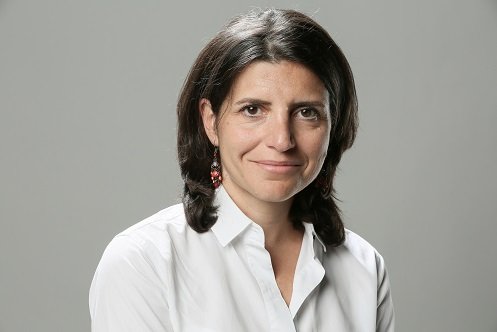
As an encore to our series about the startup climate in the Netherlands, we publish this interview with Isabel Casado Harrington. She leads the “enable”-programme at the École Polytechnique Fédérale de Lausanne (EPFL), intended to promote the commercialisation of innovative technologies.
To convince investors and customers, start-ups need to build a good prototype. How best to tackle this important step?
By Tiago Pires, The Technologist
At some point, every start-up faces an important challenge: creating a prototype. The goal is both to test a concept’s viability and to probe its appeal with potential investors and customers. This step can take time and be costly.
Most important, according to Isabel Casado Harrington, is not to obsess about making a perfect prototype, but instead to concentrate on showing how a concept works and how it might satisfy the needs of users. Harrington is the manager of “enable”, a programme at the École Polytechnique Fédérale de Lausanne (EPFL) aimed at facilitating the commercialisation of innovative technologies.
Tiago Pires: Developing a minimal viable product (MVP) is an essential part of product development. How can we measure its importance for a start-up?

Isabel Casado Harrington: An MVP must be at the heart of any start-up’s strategy. A prototype will lower the hurdles that are linked to entrepreneurial early-stage projects. It will allow engagement with partners and even investors. The prototype will also make it possible to work iteratively, building your story around customer feedback. In life-sciences, a pre-clinical study offers the validation for moving forward. In the software area, for example with artificial-intelligence algorithms, the prototype is the product’s front end.
What are the elements to consider?
When a start-up creates a prototype, it’s important to put the user at the centre of the process. To optimise the product, you have to work in an iterative mode. That means constantly testing your prototype, collecting feedback, and then adjusting the prototype for the customer.

A good balance must be found between key features and final capabilities. The ultimate size of a product and the speed of its software, for example, can be improved after you’ve demonstrated that it works. Take a drone: you might initially focus on key features such as safety or stability, then in a later stage you can work on improving flight time.
How much time does this take?
It depends on the sectors but also on the partners. Young companies can accelerate the process with the right investment at the right time. It’s about taking small affordable steps and getting user feedback early in the process. Again, it’s not about building your final product – maybe you can start with foam modelling, and then move on to 3D printing. A life-sciences product, however, will take significantly more time to have an MVP because of the need for pre-clinical validation, ethics compliance and regulatory approval. So, it’s important for young entrepreneurs to keep the planning in mind and have a clear schedule.
What are the main risks for young companies at this stage?
Funding is one of them. Clearly, searching and convincing the right investors requires a lot of time. Another risk is building a product that doesn’t meet a market need. Technologists should not remain focused only on the innovativeness of their technology; they should think of the problems it will solve and of the ultimate need for it. A lot of young entrepreneurs want to have the perfect prototype. But sometimes, perfect can be the enemy of good enough. An MVP must be built with the help of feedback. You have to test the prototype in its environment and make it evolve so that it can serve its customers and be adopted by the market.
What is the role of product design?
The design must be integrated as early as possible into the creation of the prototype. For example, we’re involved in the creation of a biomedical innovative device that will be used by surgeons. We invited an industrial designer to attend an operation and observe the use of the prototype. It was important for him to be aware of the use, but also to see how the object would be handled.
The industrial designer’s role is not just to create a pretty box, but to contribute to the successful development of the prototype.
How much should a prototype cost?
It depends on the product and its components. The cost could go from a couple of euros to a six-digit figure. But it’s important not to spend all your development funds on a perfect prototype only to discover that you need further iterations. Nowadays, 3D printing allows incredible results while using a minimum of materials. You could start with limited functionality, for example by building a specific application for limited use.
Can you give us a recent example of a very good prototype?
One is DispenCell, an innovative method of single-cell isolation based on the “impedance spectroscopy” method developed by the EPFL spin-off SEED Biosciences. DispenCell is an enabler for personalised medicine which allows scientists to isolate single cells reliably and cost-effectively by reducing lab time and validation time.
It’s a good example because the prototype first allowed validation of the technology. The prototyping phase was key in revealing needs and constraints that were not originally considered. Finally, the prototype was instrumental in convincing partners and investors.
This interview was first published by The Technologist and was reused with permission.

